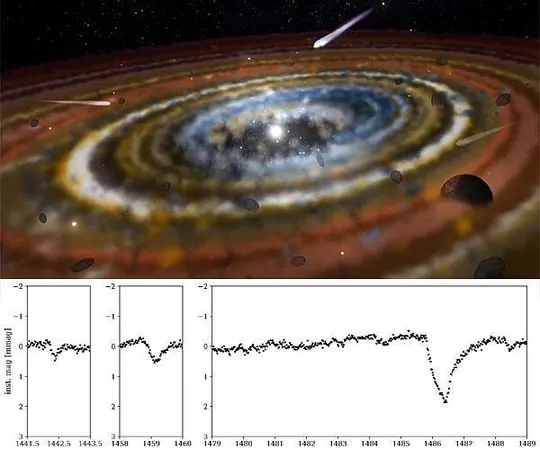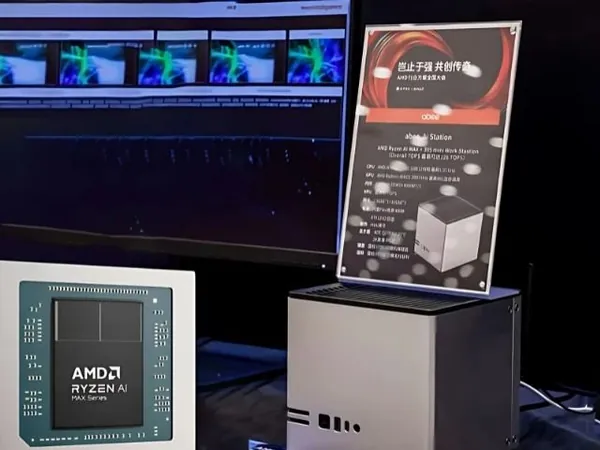
Astrophysicists Unveil Structure of Exocomet Belts Surrounding 74 Nearby Stars: A Groundbreaking Discovery!
2025-01-19
Author: Jia
Groundbreaking Discovery by Trinity College Dublin
Astrophysicists from Trinity College Dublin have embarked on a groundbreaking exploration of the cosmos, successfully capturing detailed images of exocomet belts surrounding an astonishing 74 nearby stars. This monumental achievement in astrophysics allows for unprecedented insights into these distant systems, significantly enhancing our understanding of planetary formation and evolution.
The REASONS Study
The extensive study, dubbed REASONS (REsolved ALMA and SMA Observations of Nearby Stars), revealed the existence of light emitted by millimeter-sized pebbles within the cold expanse of these exocomet belts. These belts vary widely among stars of different ages, ranging from young, in-process stars to older, evolved systems that bear similarities to our very own Solar System.
The Nature of Exocomet Belts
Located tens to hundreds of astronomical units (AU) away from their respective stars, these icy belts boast frigid temperatures plummeting between -250 and -150 degrees Celsius. In such extreme conditions, substances like water freeze into ice, forming significant reservoirs vital for potential planetary development.
Advanced Imaging Technology
This comprehensive survey is the first of its kind to delineate the structure of exocomet belts across a diverse array of 74 exoplanetary systems. The findings stem from the advanced imaging capabilities of the Atacama Large Millimeter/submillimeter Array (ALMA) in Chile and the Submillimeter Array (SMA) in Hawaii. These cutting-edge telescopes specialize in capturing electromagnetic radiation at millimeter and submillimeter wavelengths, allowing scientists to make meticulous observations of exocomet populations.
Nature of Exocomets
Luca Matra, an Associate Professor at Trinity's School of Physics, explained the nature of exocomets, referring to them as 'boulders of rock and ice, at least 1 km in size,' which collide within these belts to create the pebbles observed in the ALMA and SMA arrays. He emphasized that exocometary belts exist in at least 20% of planetary systems, showcasing their prevalence in the universe.
Structural Diversity Among Exocomet Belts
The findings also shed light on the structural diversity among these exocomet belts. Some belts appear as narrow rings—similar to our own Solar System's Edgeworth-Kuiper belt—while many others are more disk-shaped, indicating a complex dynamic of material within these systems.
Unseen Planets and Their Influence
Remarkably, some systems were found to possess multiple rings or disks, showcasing eccentric patterns that hint at the presence of unseen planets exerting gravitational influence to sculpt these formations.
Study Insights and Future Research
Prof. Matra noted, 'The power of a large study like REASONS lies in uncovering population-wide properties and trends.' The research revealed a fascinating correlation: the quantity of pebbles diminishes in older planetary systems, as the larger exocomets collide and deplete the material. Interestingly, this depletion occurs more rapidly in belts located closer to their host stars.
Technological Prowess and Collaborative Effort
Dr. David Wilner, a Senior Astrophysicist at the Center for Astrophysics | Harvard and Smithsonian, highlighted the technological prowess of the telescopes utilized in this study, stating that the ALMA and SMA arrays are 'extraordinary tools that continue to provide incredible new insights into the universe.' He also emphasized the collaborative nature of the REASONS survey, underscoring its potential for legacy value and future investigations.
Conclusion and Future Prospects
In conclusion, the REASONS dataset offers a wealth of information regarding belt and planetary system properties, paving the way for further studies on the birth and evolution of these icy realms. As researchers plan follow-up observations utilizing cutting-edge technology like the JWST and the upcoming Extremely Large Telescopes, the mysteries of exocomet belts promise to unravel significantly in the years to come.
Stay tuned for more celestial discoveries!


 Brasil (PT)
Brasil (PT)
 Canada (EN)
Canada (EN)
 Chile (ES)
Chile (ES)
 Česko (CS)
Česko (CS)
 대한민국 (KO)
대한민국 (KO)
 España (ES)
España (ES)
 France (FR)
France (FR)
 Hong Kong (EN)
Hong Kong (EN)
 Italia (IT)
Italia (IT)
 日本 (JA)
日本 (JA)
 Magyarország (HU)
Magyarország (HU)
 Norge (NO)
Norge (NO)
 Polska (PL)
Polska (PL)
 Schweiz (DE)
Schweiz (DE)
 Singapore (EN)
Singapore (EN)
 Sverige (SV)
Sverige (SV)
 Suomi (FI)
Suomi (FI)
 Türkiye (TR)
Türkiye (TR)
 الإمارات العربية المتحدة (AR)
الإمارات العربية المتحدة (AR)